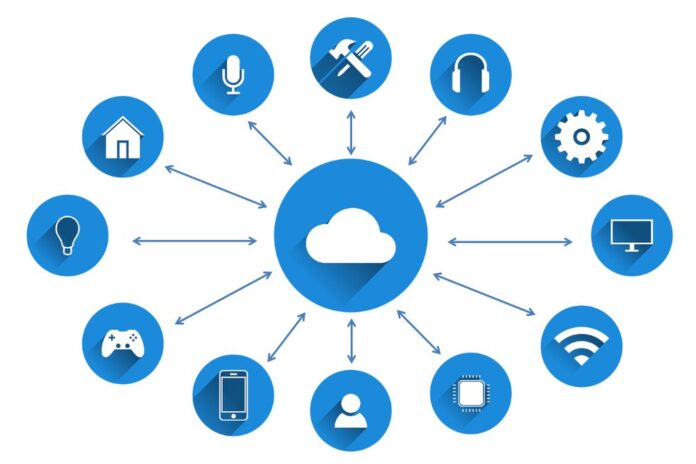The Internet of Things (IoT) rapidly changes how businesses and consumers interact. Many organizations view digital transformation as essential to staying competitive in their respective markets, and IoT allows them to stay ahead. While plenty of advantages can be gained by leveraging this cutting-edge technology, there are also many considerations regarding adoption and implementation, including IoT devices security vulnerabilities.
In this blog post, we will explore IoT’s impact on businesses and consumers – from its potential benefits to potential risks associated with its usage. Additionally, we’ll look at ways companies can maximize success when implementing IoT solutions throughout their organization. Let’s get started!
Introducing the Internet of Things (IoT)
IoT is a network of connected devices that communicate with each other to gather and transmit data. From smart thermostats to fitness trackers, the potential applications for IoT are virtually endless. These interconnected devices use sensors and software to collect and analyze data to give users insights into their daily lives. Integrating technology into everyday objects, the IoT is poised to revolutionize how we live, work, and play. From improving energy efficiency to enhancing healthcare, the possibilities of the IoT are limited only by our imagination.
Examining the Impact of IoT on Businesses
The Internet of Things (IoT) has transformed the face of contemporary businesses in numerous ways. With its real-time capabilities to gather and analyze data, IoT has brought about significant cost savings and increased efficiency. However, while IoT has revolutionized how businesses operate, it also comes with vulnerabilities, such as security and privacy concerns.
The growing prevalence of IoT devices in the workplace makes it essential for companies to develop security protocols to protect against cyber threats. Despite these concerns, IoT still holds the potential to enhance customer service, revolutionize operations and drive growth. It is up to businesses to ensure that IoT vulnerabilities are mitigated so that they can maximize the benefits of this game-changing technology.
Exploring the Changing Consumer Landscape Due to IoT
The growth of IoT (Internet of Things) transforms how consumers shop, making their experiences more convenient and personalized. With the advent of technology, retailers can collect vast amounts of consumer data, such as their purchase history, browsing behavior, and even location. They can then use this information to provide tailored recommendations, loyalty programs, and promotions that cater to individual needs.
Shopping has become smarter, with IoT devices like smart mirrors and smart assistants making it easier for consumers to browse and purchase products in their homes. The changing consumer landscape due to IoT can revolutionize the retail industry. It also enhances the shopping experience for everyone.
Discussing the Security Challenges
The exchange of data and information is at an all-time high. While this allows for seamless communication and improved efficiency, it also brings security challenges. With the rise of the Internet of Things (IoT), vulnerabilities are constantly being exposed, creating a need for stronger security measures.
Whether personal information is compromised or financial data is stolen, the risks associated with an interconnected world cannot be ignored. As we continue toward greater interconnectivity, it’s important to consider the security implications and focus on developing solutions that protect our data and keep us safe online.
Analyzing How Governments are Responding to the Growth of IoT
The Internet of Things (IoT) has brought about tremendous benefits, but it has also exposed its vulnerabilities regarding privacy and safety. To address these concerns, governments around the world are taking action by creating regulations to ensure that the technology is used and developed responsibly.
While there are still debates about the extent of government involvement, these measures strike a balance between promoting innovation and protecting consumers from potential harm. As IoT expands, it’s becoming increasingly important to critically evaluate how governments respond and whether their efforts adequately mitigate IoT vulnerabilities.
Looking at the Future of IoT
The Internet of Things, or IoT, has rapidly advanced over the years, allowing interconnected devices to communicate with one another seamlessly. The future of IoT is constantly evolving, bringing to light new groundbreaking uses for our interconnected society. We are only beginning to scratch the surface of the potential IoT has to offer.
The possibilities for enhancing our daily lives and increasing efficiencies in the workplace are immeasurable, and it won’t be long before we start seeing some truly impressive applications. It’s exciting to think about what’s to come, and we can’t wait to see what the future holds for IoT.
Final Thoughts
The Internet of Things is already a part of everyday life, with the potential to change our world in ways we can’t even imagine. It will continue to require new forms of regulation and oversight to ensure safety and privacy, and governments worldwide have already taken steps toward this end.
IoT promises businesses cost savings, increased efficiency, better customer service, and convenience for consumers regarding personal shopping experiences. It could revolutionize virtually every aspect of our lives, from transportation systems to healthcare to energy consumption. It’s up to all of us to recognize the potential harms and opportunities that come with living in an interconnected age as we look ahead into the future.


